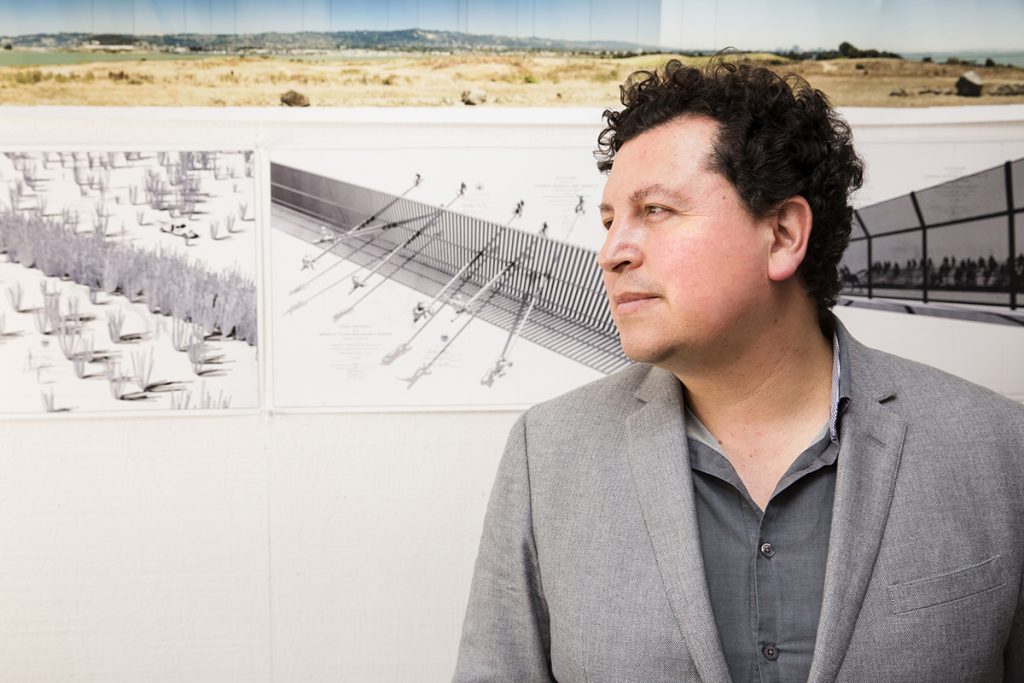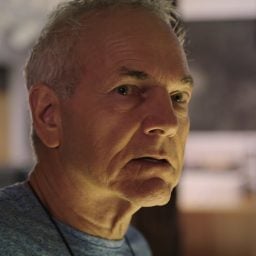It was an image that quickly captured the imagination: an austere black barrier seeking to prevent migrants from entering the US over its southern border suddenly transformed into a place of joy and connection, a hot pink beam slid between the slats to create a temporary seesaw for children in both countries to play on together.
The Teeter-Totter Wall installation, which in July 2019 turned the controversial border wall into a uniting force, was the work of architecture studio Rael San Fratello. Last month, it won London’s Design Museum’s Beazley Designs of the Year award for best design of 2020, honoring UC Berkeley architecture professor Ronald Rael, San Jose State interior design faculty member Virginia San Fratello, and Colectivo Chopeke, an art collective based in Juárez, Mexico.
Now, Rael is unveiling his follow-up project, Pedacito de la Tierra (A Little Piece of Home), which looks to bring a sense of community to shelters south of Mexican border by building hornos, traditional clay ovens, where migrants can come together to share a meal.
“The idea is to bring people together as one community around food,” Rael told Artnet News.

Rael San Fratello, Teeter-Totter Wall. American and Mexican families play on a seesaw straddling the Mexican border with US at the Anapra zone in Ciudad Juarez, Chihuahua State, Mexico on July 28, 2019. Photo by Luise Torres/AFP/Getty Images.
Late last year, he traveled to the Casa de la Misericordia shelter in Nogales, Mexico, located about a 15 minute drive south of the border, to build the first of what he hopes will be many hornos. A large team is helping bring Rael’s vision of radical hospitality to life, including global humanitarian organization Alight, Burning Man’s Burners Without Borders, the Catholic Sisters, and filmmakers Lina Plioplyte and Kai Schoenhals.
“I hope that we build hundreds of them,” Rael said. “I hope this opens the door and creates communities all along—and across—the border.”
Ahead of a virtual dinner event on February 6 celebrating the premiere of a short film documenting the project, Artnet News spoke with Rael about the lost craft of adobe brick ovens, the intersection of art and activism, and the importance of community.
What sparked your interest in hornos?
Hornos are something that’s traditional to where I’m from—Southern Colorado, Northern New Mexico.
My great-grandmother, who died the year after I was born, was kind of a famous cook in our community. And it was only 10 years ago that I discovered the ruins of an horno that she cooked on right down the road from our house. So I started building them.
How did people at the shelter respond to the idea of the hornos?
When I first arrived at the shelter, the first question I asked was “how many of you have cooked in an horno?” More than half of the people raised their hands. It was something that they were very familiar with, and it has allowed them to reassert their own customs. They’ve been able to bring a little piece of their home to the shelter through these traditions.
Now, this project is opening itself up to the world. Everyone can sit around the table—even though it’s a virtual table—and experience this cooking technology that spans countries, that has spanned centuries.
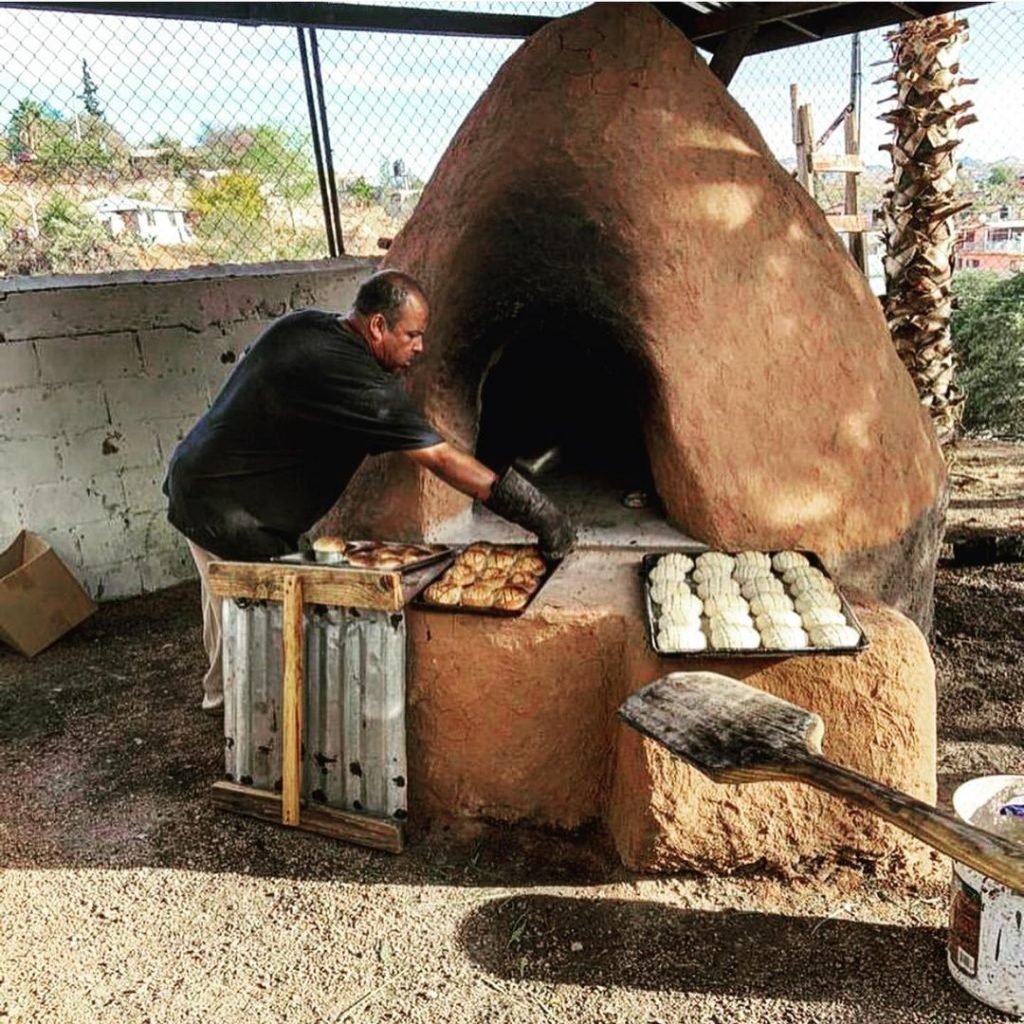
Cooking in the horno Ronald Rael built for his project Pedacito de la Tierra (A Little Piece of Home) at the Casa de la Misericordia shelter in Nogales, Mexico. Photo courtesy of Alight.
How did you design the horno for the shelter?
There was not really a plan or a design—there’s fundamental idea of what the horno does and how it works, where the smoke exits, where you light the fire. But I had never built an horno this large. The interior diameter is about six or seven feet. You could put like a hundred loaves of bread in this thing.
I can’t say that I was entirely confident, but there was one gentleman there whose parents were bread makers in his village in Guatemala. We just embarked upon making it together.

The horno Ronald Rael built for his project Pedacito de la Tierra (A Little Piece of Home) at the Casa de la Misericordia shelter in Nogales, Mexico. Photo courtesy of Alight.
What is it like to cook with an horno?
There can be many different kinds of cooking with an horno. You can smoke something, and that imparts a beautiful flavor to it. And there’s barbecue grills, which let you cook right on the fire. And it can become a convection oven for baking.
The food, whether it is bread or meat or vegetable, tastes absolutely delicious. You’re making local food from an oven that’s made out of the ground that you’re standing on. So the actual terroir is the oven itself, and you’re burning wood that is growing from that ground too—you’re tasting the place.
The budget per person per meal at the shelter is 53 cents, and the food is incredible. Part of what I hope is learned and experienced is the fundamental simplicity and beauty of food, its connection to place, and how we need to respect food not as a commodity, but as part of our life.
What makes this project a work of art and design?
I’ve been thinking a lot about that actually, and I don’t know if I have any conclusions. Certainly there’s art that has been part of a social practice movement for some time. If art is about an aesthetic experience, and design is about solving problems, and if activism is about making change, then I think all of this is embodied in the project.
Certainly, the horno is beautiful. There’s a craft to building these that I think is dying in the United States. It’s a tradition that has existed here for 400 years. The horno itself migrated to the Americas from Spain via North Africa.
An horno in a contemporary art museum would be amazing—and it would be something no one would have ever seen, to have this space of fire and food and mud. I think the museum and the gallery are potential venues in which we can smuggle in new ways of thinking about about activism and change and transformation.
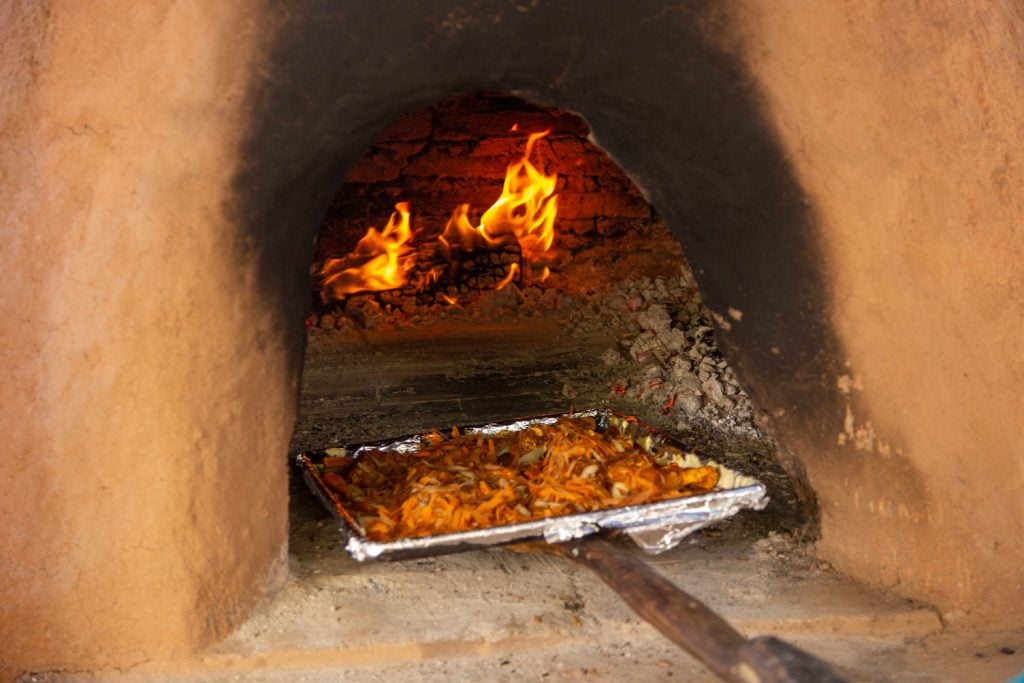
Having begun this project when President Donald Trump was still in office, how hopeful are you about the situation on the border now that Joe Biden is president? Do you worry people becoming complacent about helping migrants at the border without that sense of urgency under Trump?
Teeter-Totter Wall was fueled by the events of the past four years, as was this horno project. The oppressive nature of the Trump administration created an awareness among a large segment of the population that pushed them to action. I think that created a momentum that will carry over.
And there has been positive change already—the day of the inauguration, Biden put a halt to the construction of the border wall.
How transitory is the population at Casa de la Misericordia? Is it shifting constantly, or are these people who are kind of stuck in limbo there for an indefinite period of time?
Historically, I think the shelter’s population had been much more in flux, but since the Trump administration, there are 200 or so residents who have been there for a really long time—there have been children born at the shelter. They’re stuck and they’re waiting; that’s the case for shelters all along the border.
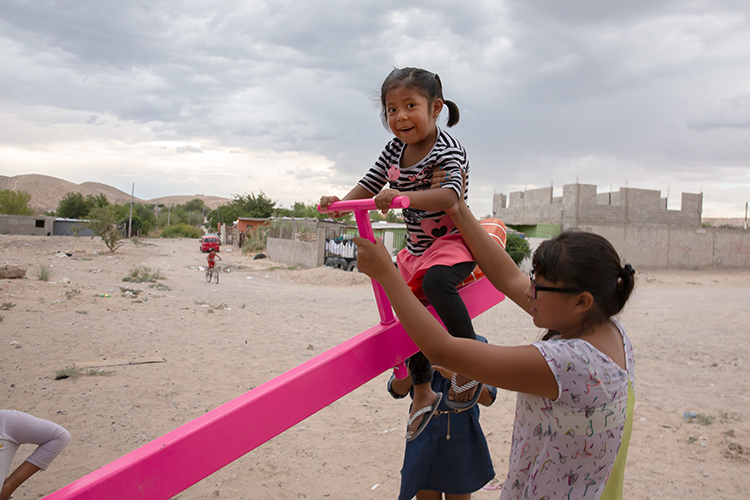
Why do you think people responded so strongly to Teeter-Totter Wall?
Our society has built invisible walls between our political beliefs, our religious beliefs, our identities. If we think about that moment of piercing that wall with that piece of steel, I think the world felt a release of pressure—like we inserted a pin into a balloon. They experienced a kind of hopefulness from the project.
From my perspective as an artist, I felt like I was stabbing a dragon. It was this immediate moment of relief. And half a second later, there was a child jumping on that thing, completely elated.
What’s really beautiful about it is that there has to be people on both sides of the wall, otherwise it’s just a piece of wood. It doesn’t work unless both communities are engaging, and they trust each other.
What did it mean to you to win the Design of the Year award?
There’s so much good design in the world that doesn’t take on political issues or social issues. And I love that. The winner could have been a project that was just a really beautiful thing. But instead we can have a conversation about a really important issue. To me, that’s the art.
So when you asked me, “how is the horno art?” It’s art because it allows us to have a really complicated conversation around a very simple thing, whether it’s a pink stick or a pile of mud.
The Pedacito de la Tierra (A Little Piece of Home) film debuts Saturday, February 6, 2 p.m. EST, with a virtual dinner event. Chef Charles Michel will lead a cooking demonstration featuring food from the migrant community, followed by a screening of the film and a conversation with Rael and his collaborators. The event is free with registration, and Alight has created a toolkit with recipes you can prepare at home.
